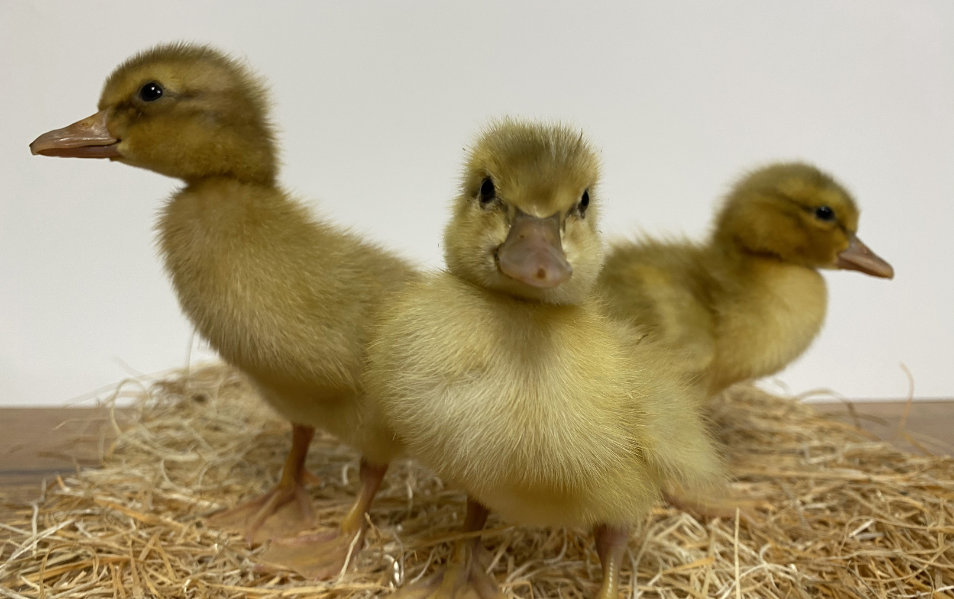
Albert Franz of Germany developed the Saxony duck in the 1930s. He used Pekin, Rouen, Buff, and Blue Pomeranian breeds to create a beautifully colored, excellent dual-purpose bird. They are large duck, second only to the Pekin. Fully grown, they weigh 6 to 9 pounds. They are great foragers and have a very gentle, docile nature. Saxony are very hardy to both hot and cold climates. With their unique coloring and markings, they are becoming very popular for exhibition. The females lay approximately 120-175 large cream eggs per year. The male Saxony duck’s pattern is like a Mallard’s, but they have a blue-grey head, wing marking, tail, chestnut, white, and cream-coloring. The female Saxony ducks are buff color with creamy white facial stripes and a cream neck ring and underbody. Ducklings are buff-colored with some darker striping on their heads and around their eyes. They have dark orange beaks, legs, and feet.
